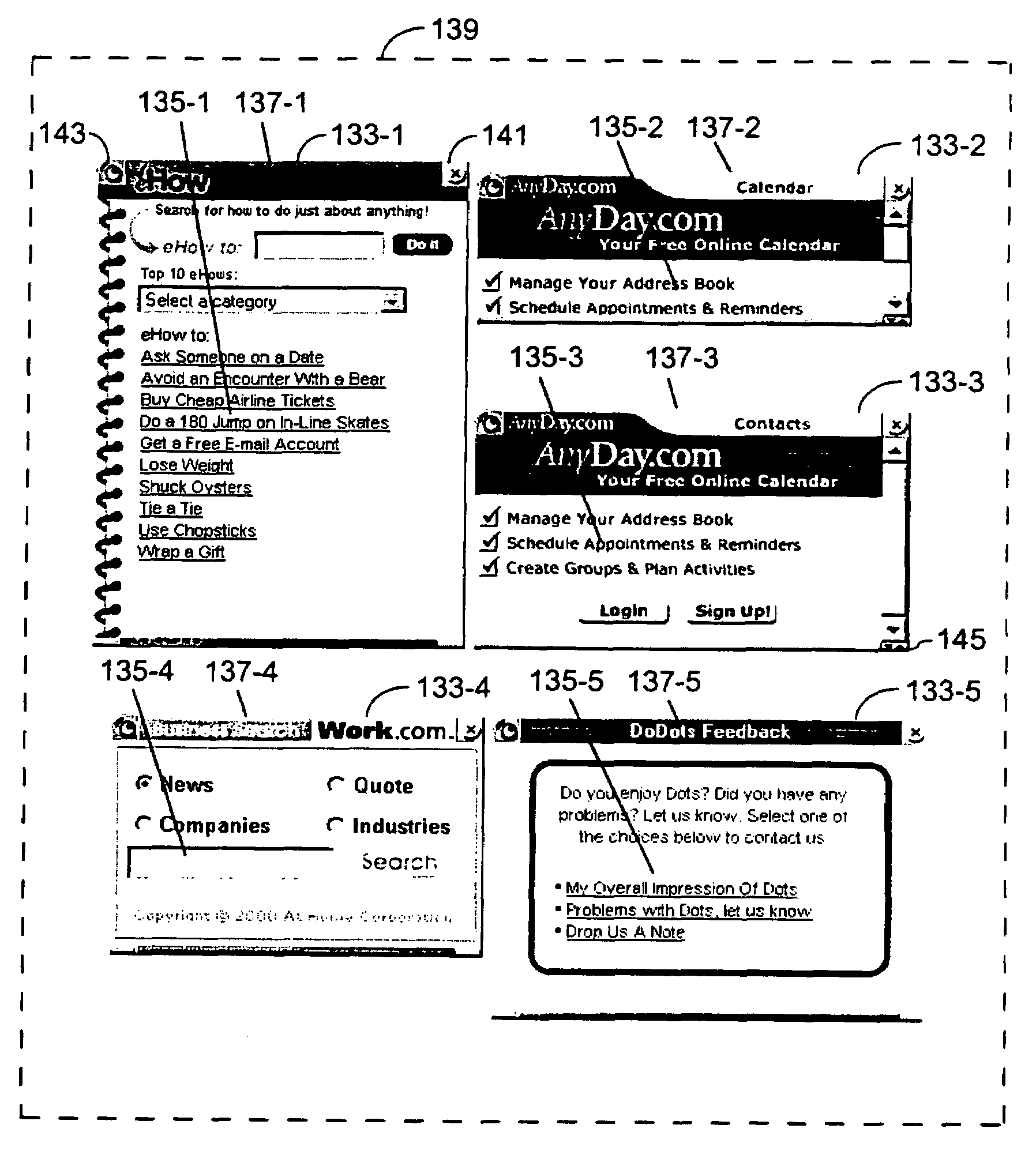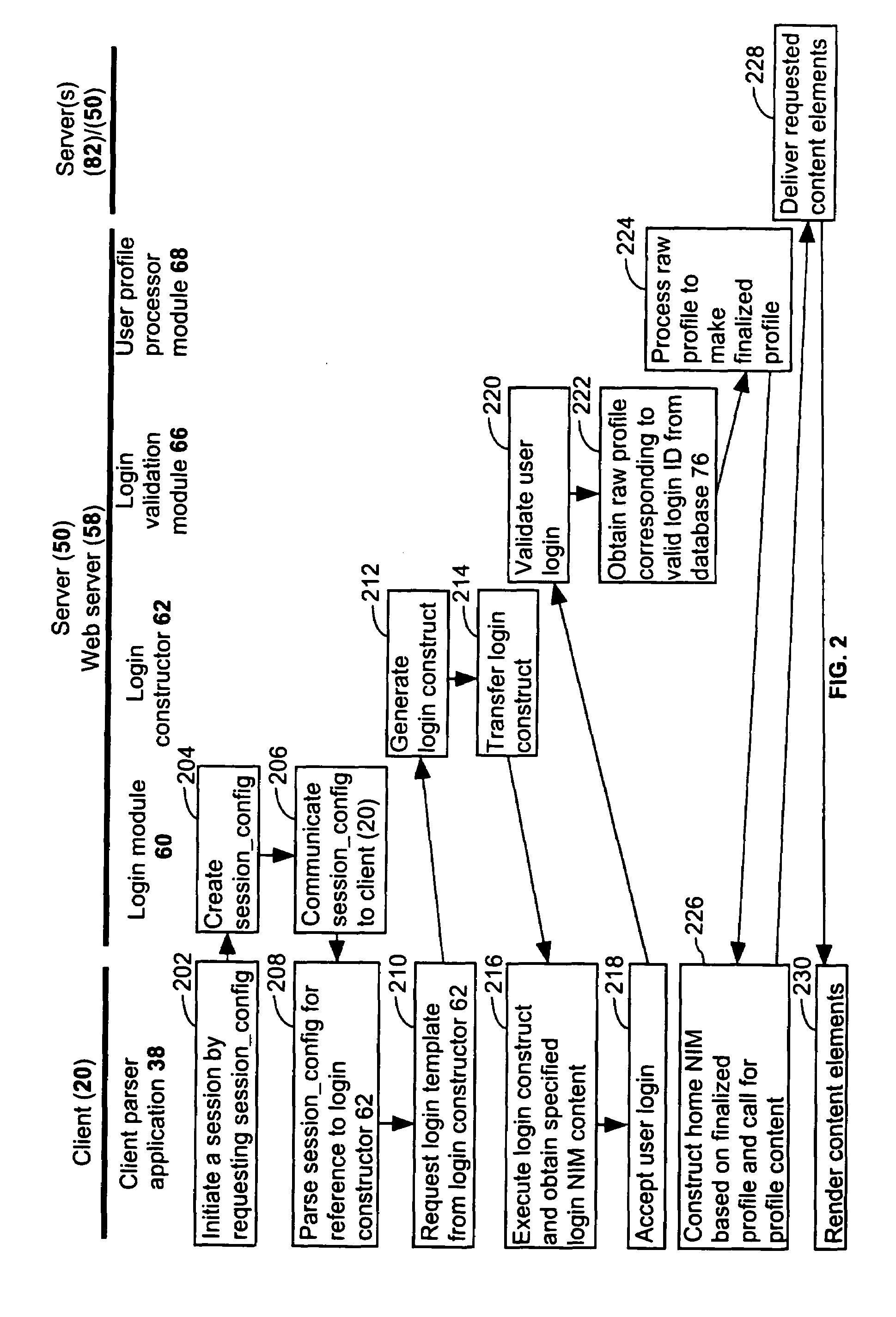Apparatus and method for tracing the distribution of diversely sourced internet content
a technology of internet content and tracing method, applied in the field of tracing the distribution of diversely sourced internet content, can solve the problems of limited control of web content and application developers over user experience, user's inability to view each “full-screen” page at the same time, and the inability to appear in each browser
- Summary
- Abstract
- Description
- Claims
- Application Information
AI Technical Summary
Benefits of technology
Problems solved by technology
Method used
Image
Examples
example 1
[0062]Version tag that identifies the latest home NIM version
[0063](1) < / SESSION_CONFIG VERSION=“alpha:3”
[0064]Upgrade event that is sourced when home NIM version is outdated
[0065](2)
[0066]Location of Server-Supported Functionality[0067]Default base address for server supported functionality
[0068](3)
[0069](4)
[0070](5) [0071](6) [0072](7)
[0073]Server-based functionality for setting password (8)
[0074]List of all publicly available NIMs
[0075](9)
[0076](10)
[0077](11)
[0078](12)
[0079](13)
[0080]Location of server-side NIM and pack sharing functionality
[0081](14)
[0082](15)
[0083](16)
[0084]Redirect information
[0085](17)
[0086](18)
[0087]Flexible content layer that defines default NIM frame appearance, including the default appearance of the frame of a home NIM
[0088](19)
[0089]Default NIM frame appearance
[0090](20)
[0091](21)
[0092]http: / / www.NIM.com / home_NIM / NIM_FrameImages / >
[0093](22)
[0094]Default home NIM frame appearance
[0095](23)
[0096](24)
[00...
example 2
[0117](1) SAMPLE PROCESSED USER PROFILE
[0118](2)
[0119]NIMs AND PACKS THAT CORRESPOND TO THE USER
[0120](3) USER
[0121]NIM definition 1
[0122](4)
[0123](5)
[0124](6) FIXHEIGHT=“TRUE” FIXWIDTH=“TRUE” NAME=“ZDNet Breaking News”
[0125](7) PIXELHEIGHT=“275” PIXELWIDTH=“235” X=“RIGHT” Y=“TOP”>
[0126](8)
[0127](9)
[0128](10) HOVER=URL address to a first GIFfile . . .
[0129](11) INACTIVE=URL address to a second GIFfile . . .
[0130](12) NORMAL=URL address to a third GIFfile . . .
[0131](13)
[0132]http: / / www.NIM.com / . . . / feed / bottombar.gif
[0133](15) HOVER=URL address to a fourth GIFfile . . .
[0134](16) INACTIVE=URL address to afifth GIFfile . . .
[0135](17) NORMAL=URL address to a sixth GIFfile . . .
[0136](18)
[0137](19)
[0138](20) <CONTROL_LAYOUT HEIGHT=“1” HEIGHTSCALES=“TRUE” WIDTH=“1”
[0139](21) WIDTHSCALES=“T...
PUM
 Login to View More
Login to View More Abstract
Description
Claims
Application Information
 Login to View More
Login to View More - R&D
- Intellectual Property
- Life Sciences
- Materials
- Tech Scout
- Unparalleled Data Quality
- Higher Quality Content
- 60% Fewer Hallucinations
Browse by: Latest US Patents, China's latest patents, Technical Efficacy Thesaurus, Application Domain, Technology Topic, Popular Technical Reports.
© 2025 PatSnap. All rights reserved.Legal|Privacy policy|Modern Slavery Act Transparency Statement|Sitemap|About US| Contact US: help@patsnap.com



